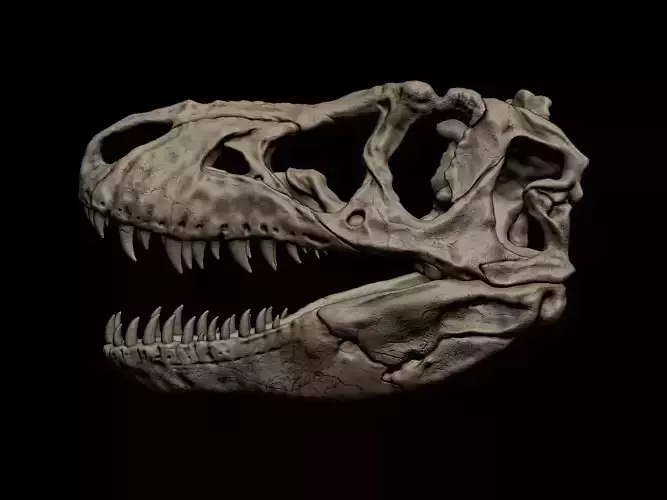
Tarbosaurus Skull 3D print model
This is a life size 3d digital model skull of a Tarbosaurus. OBJ, ZTL, PLY, FBX and STL files. jaw is seperated.
Tarbosaurus is a genus of large tyrannosaurid dinosaur that lived in Asia during the Late Cretaceous epoch, about 70 million years ago (Maastrichtian age). It contains the single type species: Tarbosaurus bataar, which is known from the Nemegt Formation of Mongolia, with more fragmentary remains found further afield in the Subashi Formation of China. Tarbosaurus is represented by dozens of fossil specimens, including several complete skulls and skeletons. These remains have allowed studies focusing on its phylogeny, skull mechanics, and brain structure. Further fossil remains have been reported from other geologic formations of Asia, however, these remains are fragmentary and cannot be confidently assigned to Tarbosaurus or the type species.
Like most known tyrannosaurids, Tarbosaurus was a large bipedal predator, with the type specimen measuring approximately 10 metres (33 ft) long, 3 metres (9.8 ft) tall at the hips, and weighing up to 4.5–5 metric tons (5.0–5.5 short tons). It had a unique locking mechanism in its jaw, equipped with about sixty large teeth, and the smallest arms relative to body size of all tyrannosaurids, renowned for their disproportionately tiny, two-fingered hands.







